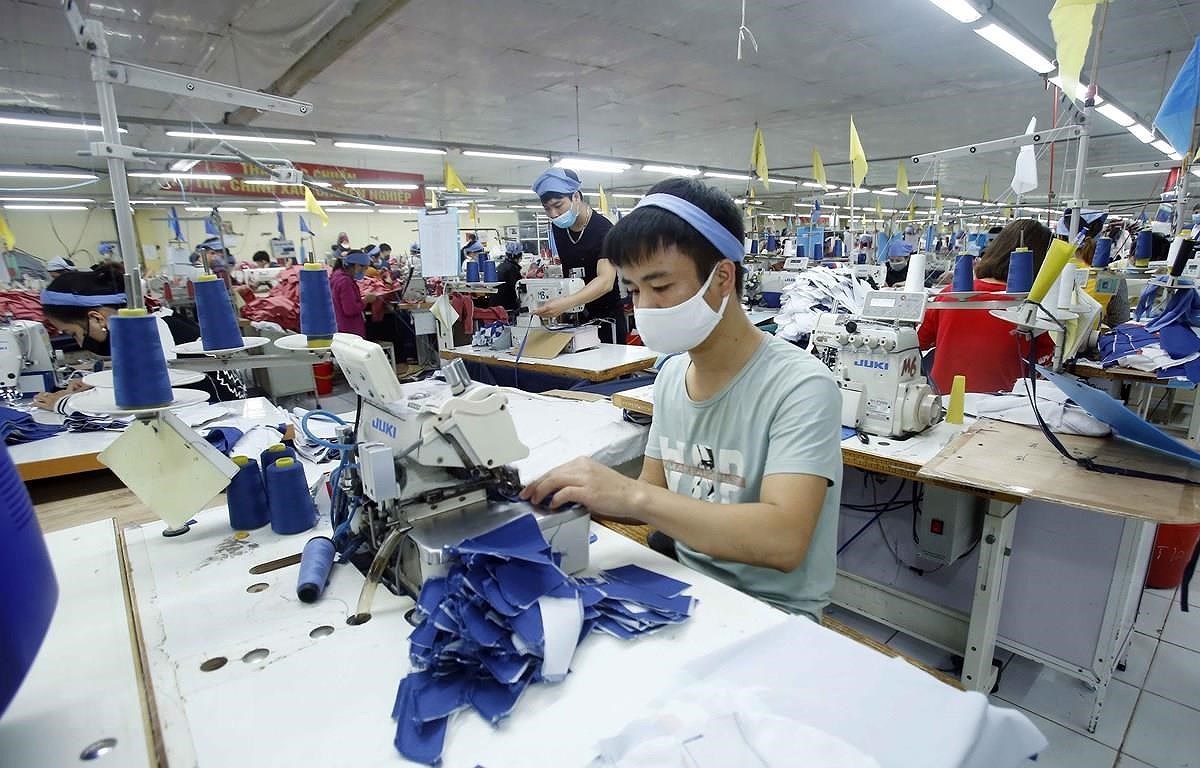Vietnam’s manufacturing sector gained growth pace at the end of the first quarter, with marked increases in output, new orders and exports, leading to stronger rises in employment and purchasing activity, according to a report by the London-based global information provider IHS Markit.
 Vietnam’s manufacturing sector gained growth pace at the end of the first quarter, with marked increases in output, new orders and exports. (Photo: VNA)
Vietnam’s manufacturing sector gained growth pace at the end of the first quarter, with marked increases in output, new orders and exports. (Photo: VNA) Vietnam’s manufacturing
sector gained growth pace at the end of the first quarter, with marked
increases in output, new orders and exports, leading to stronger rises in
employment and purchasing activity, according to a report by the London-based
global information provider IHS Markit.
In the report on Vietnam Manufacturing Purchasing
Managers' Index (PMI) in March revealed on April 1, IHS Markit said business
confidence in the country also surged to a 20-month high.
The index rose to 53.6 in March, up from 51.6 in
February and signalling a solid improvement in the health of the manufacturing
sector. In fact, business conditions strengthened to the greatest extent in 27
months.
Signs of improving customer demand and success in
keeping the COVID-19 pandemic under control helped to support rises in new
orders and output in March.
New business increased for the seventh successive
month, and at the fastest pace since July 2019. In some cases, clients had
expanded their order sizes over the month. There were also signs of improvement
in international demand conditions, helping lead to the greatest increase in
new business from abroad since November 2018.
Production, meanwhile, rose at a much faster pace
than in February, with the rate of growth hitting a 20-month high. Output was
up across all three broad sectors, with consumer goods firms leading the
expansion.
Higher new orders and expanded production
requirements encouraged Vietnamese manufacturers to increase their staffing
levels and purchasing activity during March.
Employment rose at a modest pace, but still the
strongest since June 2019. Similarly, input buying increased to the greatest
extent in 20 months.
On a less positive note, disruption to supply chains
continued to affect the sector and led inflationary pressures to strengthen.
Input costs and output prices rose at the fastest rates in just over three and
four years respectively.
Difficulties sourcing raw materials remained, with
suppliers' delivery times continuing to lengthen. Issues with the importing of
items, material shortages and a lack of shipping containers all contributed to
longer lead times. That said, vendor performance declined to the least extent in
four months and firms were able to expand their stocks of purchases.
Stocks of finished goods also rose, due to a
combination of higher production and issues with the delivery of orders.
Shortages of raw materials, often due to the
COVID-19 pandemic, led to a sharp and accelerated increase in input costs
during March. In particular, higher steel prices and increased costs for items
sourced from China were mentioned. The latest rise was the fastest in just over
three years.
Output prices, meanwhile, were raised at the
sharpest pace in just over four years as manufacturers passed on higher input
costs to their customers.
Commenting on the latest survey results, Andrew
Harker, Economics Director at IHS Markit, said the Vietnamese manufacturing
sector saw growth step up a level in March, with production rising at the
fastest pace in 20 months according to the latest PMI data.
Based on the historical relationship between the PMI
and official numbers, the latest figures suggest manufacturing production
secured double-digit growth year-on-year in the first quarter./.